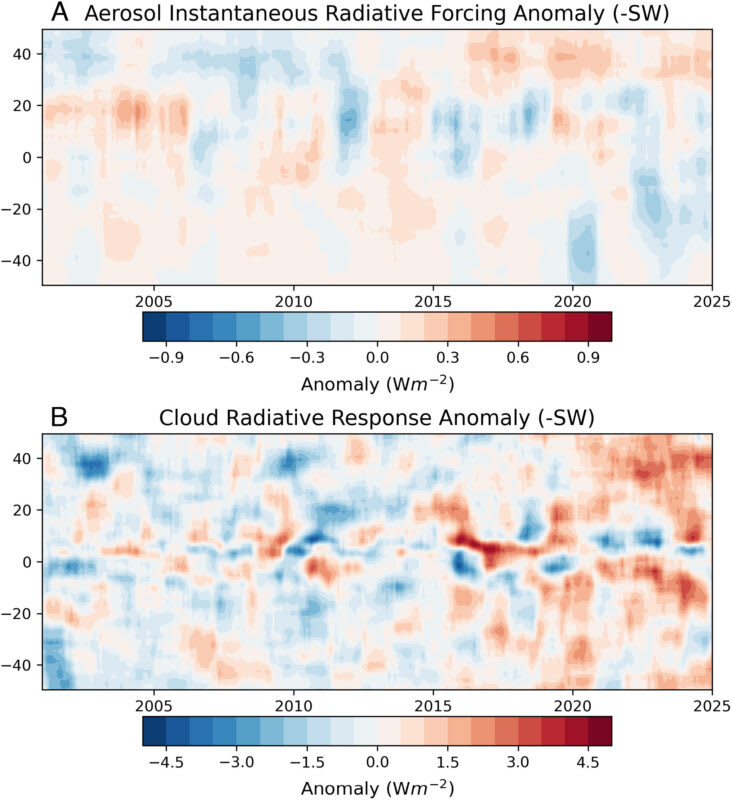A new study published inProceedings of the National Academy of Sciences (PNAS) has revealed that Earth is reflecting progressively less sunlight, an observation that carries significant weight for our understanding of climate change. This intriguing development is the result of a two-decade-long analysis led by Norman Loeb of NASA’s Langley Research Center. As the planet’s albedo, or surface reflectivity, declines, researchers are uncovering critical shifts in energy distribution between the northern and southern hemispheres. These findings offer new insights into how our planet interacts with solar radiation and could refine global climate models in the future.
Declining Reflectivity: The Study’s Key Finding
Between 2001 and 2024, Earth’s reflectivity—essentially its ability to bounce sunlight back into space—has noticeably decreased, as reported by a team of scientists. This reduction in reflectivity, also known as albedo, has occurred more markedly in the northern hemisphere compared to the southern hemisphere. The team used satellite data to analyze how much sunlight the Earth is reflecting and found that, on average, there has been a noticeable decrease in surface albedo.
“In general, the southern hemisphere gains radiative energy at the top of the atmosphere on average, while there is a net loss in the northern hemisphere,” the research group wrote. This imbalance insolar radiation between the hemispheres, first noted by earlier studies, has become more pronounced due to atmospheric changes that seem unable to completely compensate for the discrepancy. The study suggests that while energy transfer via oceanic and atmospheric circulation occurs, it has not been sufficient to balance the hemispheric differences.

Northern Hemisphere Darkening: Ice Loss and Surface Changes
One of the most striking aspects of the study is its focus on the northern hemisphere, where changes in surface reflectivity are most noticeable. The primary culprit for this darkening trend is the decline in sea ice concentration and snow cover. These surfaces reflect a large portion of incoming solar radiation, helping to maintain the Earth’s overall energy balance. As the northern ice sheets melt and snow cover recedes, darker surfaces like water and rock are exposed, which absorb more sunlight and reduce the overall reflectivity.
The team explains that the shift in albedo is statistically significant, but small in magnitude—”With an average energy intake from solar radiation of 240 to 243 watts per square meter, a divergence of 0.34 watts per square meter per decade is not very much.” However, this seemingly small change holds great importance as it affects the Earth’s energy balance over long periods. Even a slight reduction in reflectivity can have amplified impacts on climate trends, particularly in regions like the Arctic, where ice melt contributes to rising temperatures.
Southern Hemisphere: The Role of Aerosols and Environmental Events
While the northern hemisphere shows a significant reduction in reflectivity, the southern hemisphere’s trends are shaped by different factors. The increase in aerosol concentration plays a major role in altering the energy balance in the southern hemisphere. Aerosols—tiny particles suspended in the atmosphere—help form clouds that can reflect solar radiation back into space. In the southern hemisphere, environmental events such as bushfires in Australia and volcanic eruptions like the Hunga Tonga eruption in 2021 and 2022 have contributed to an increase in aerosols. These particles reflect sunlight and can mitigate the effects of the darkening observed in the northern hemisphere.
The study also notes that this influx of aerosols contrasts with the northern hemisphere, where stricter environmental protection measures have led to a reduction in fine particulate pollution. As a result, the southern hemisphere has experienced less of a decline in reflectivity compared to its northern counterpart.
Enjoyed this article? Subscribe to our free newsletter for engaging stories, exclusive content, and the latest news.












